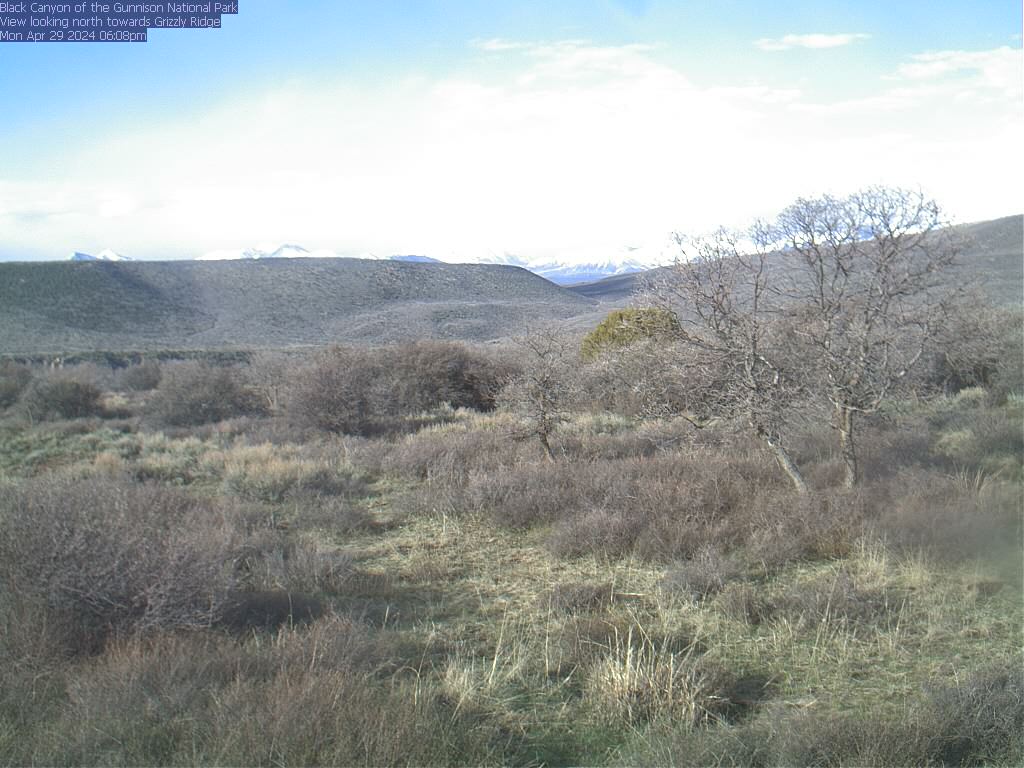Black Canyon NP, CO Weather Cams
Grizzly Ridge

Black Canyon of the Gunnison: Colorado’s Deepest and Most Dramatic Gorge
Black Canyon NP, Colorado Weather Cams. Black Canyon of the Gunnison National Park, located in western Colorado, is one of the most striking landscapes in the American West. Known for its sheer cliffs, narrow passageways, and dark, shadowed depths, the canyon has challenged explorers, engineers, and conservationists for centuries. Its history is shaped by Indigenous presence, early exploration, railroad surveys, and water diversion projects, culminating in its designation as a national park in 1999.
Indigenous Presence and Early Exploration
For over 9,000 years, the Black Canyon region was inhabited by Ute and other Indigenous groups, who used the canyon rims for hunting and seasonal migrations. Unlike other areas of Colorado, the inner canyon shows little evidence of human occupation due to its steep, rugged terrain.
The first recorded European exploration of the canyon occurred in 1853, when Captain John W. Gunnison led an expedition to survey a potential railroad route across the Rockies. Gunnison bypassed the canyon, deeming it too treacherous for travel. His name was later given to the Gunnison River, which carved the canyon over millions of years.
Railroad Surveys and Water Diversion
In the 1870s, surveyors from the Denver & Rio Grande Railroad attempted to map a route through the canyon but found it too steep and narrow for rail construction. Instead, the railroad followed a path through the Arkansas River Valley, avoiding the canyon’s sheer walls.
By 1901, engineers sought to harness the Gunnison River’s water for irrigation. Abraham Lincoln Fellows and William Torrence navigated the canyon on a rubber mattress, proving that a diversion tunnel was feasible. The Gunnison Tunnel, completed in 1909, redirected water to the Uncompahgre Valley, transforming agriculture in western Colorado.
Conservation Efforts and National Park Designation
Local residents began advocating for the canyon’s preservation in the 1930s, leading to its designation as a national monument in 1933. The Civilian Conservation Corps (CCC) built trails, roads, and campgrounds, making the canyon more accessible.
During the Mission 66 initiative (1950s–1960s), the park saw further improvements, including paved scenic drives and expanded visitor facilities. In 1999, Congress elevated Black Canyon to national park status, incorporating additional lands from the Bureau of Land Management.
Geology and Natural Features
The canyon’s dramatic landscape is the result of millions of years of geological processes. The Gunnison River drops an average of 34 feet per mile, making it one of the steepest river descents in North America. The canyon’s walls are composed of Precambrian gneiss and schist, some of the oldest exposed rock in North America.
One of the most famous features is the Painted Wall, the tallest sheer cliff in Colorado at 2,250 feet. Its light-colored pegmatite streaks create a striking visual contrast against the dark canyon walls.
Modern-Day Black Canyon National Park
Today, Black Canyon of the Gunnison National Park attracts visitors for its hiking, rock climbing, and scenic overlooks. The park contains 14 miles of the 48-mile-long canyon, with the deepest and most dramatic sections protected within its boundaries.
The South Rim entrance, located near Montrose, Colorado, offers the most accessible viewpoints, while the North Rim entrance, near Crawford, provides a more remote experience. The Gunnison Gorge National Conservation Area, downstream from the park, offers additional opportunities for whitewater rafting and fishing.
Conclusion
Black Canyon of the Gunnison stands as a testament to natural forces, human ingenuity, and conservation efforts. Its steep cliffs, dark depths, and roaring river make it one of Colorado’s most awe-inspiring landscapes. Whether admired from its scenic overlooks or explored through its rugged terrain, the canyon remains a symbol of the untamed beauty of the American West.
For more information, visit the Alamosa, Colorado official website.
